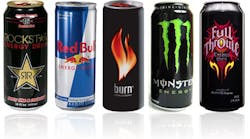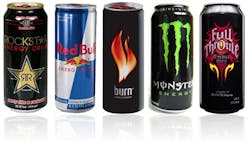Along these lines is a recent study on energy drinks, sales of which are projected to reach $52 billion by 2016.(2) Energy drinks are often sold as dietary supplements, and most often contain stimulants. The Dietary Supplement Protection Act reports a model public health safety record.(3) However, in 2011 the number of emergency department visits related to consumption of energy drinks exceeded 20,000.(2) Nearly half of these visits involved adverse effects occurring from misuse of energy drinks. There are political, social, economic, practical, and legal factors that affect this issue. This report was a result of a policy analysis, examining three options: capping energy drink caffeine levels, creating a public education campaign, and increasing regulatory scrutiny regarding the manufacture and labeling of energy drinks. The conclusion was that increased regulatory analysis should be an objective, as there have been wrongful death lawsuits related to caffeine toxicity resulting from energy drink consumption.
In this issue we discuss some serious health concerns, such as antibiotic resistance, evidence-based dentistry (EBD), and excessive sugar consumption. Thanks to Dona Schultz for Step Next: Anticipate, Prepare, and Accomplish Your Way to Success – Part 2. Hand in hand with sugar consumption is obesity, and often, diabetes. New research from the American Journal of Public Health finds that overweight adolescents are less likely than non-overweight adolescents to be chosen as a friend by their peers.(1) The goal of this study was to determine how adolescent weight status affects friend selection. Using a social network approach, we tested how the weight status of the person initiating the friendship and the weight status of the friendship target combine to affect friendship likelihood,” the study’s authors explain. The study involved data from 58,897 students from 88 middle and high schools that participated in the National Longitudinal Study of Adolescent health. The study used a social networking strategy, and the teenage subjects, at an average age of 15, were asked to identify their five closest female and male friends. Body mass index (BMI) was self-reported and those in the study were classified as underweight, healthy weight, overweight or obese. Results show that non-overweight young people were more likely to select non-overweight friends than overweight friends. Also, overweight teens were unconcerned about weight status in selecting their friends. Researchers also found that overweight youth were more likely to choose a nonoverweight friend than they were likely to receive a non-overweight friend selection in return.










